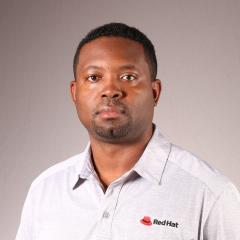Is 'systems architect' a role or a skill?

Photo by Suliman Sallehi from Pexels
I've heard technology architects referred to as "human systems engineers." According to Indeed, an engineer is a person who's involved in inventing, designing, and maintaining a variety of machines, structures, and data systems. That sounds a lot like the job description of an architect.
A recent conversation with Red Hat solution architect Rodrique Heron caused me to rethink how I view the architect role. I previously thought the term "architect" in the context of technology seemed straightforward: An architect is someone who designs solutions for technology the way a building architect designs physical structures.
However, Rodrique says "architect" is broader than that simple definition. An architect's tasks depend on where they work, what they do, and many other factors, such as the size of their company. Every organization, big or small, needs systems architecture.
But this raises another question. Is inventing, designing, and maintaining system architecture a role or a job function? After all, someone who doesn't hold the title of an architect can still be responsible for building and maintaining an architecture. That's valid, as long as that architecture is effective for the organization. So is an architect an extension of the engineer role—a person whose skills are what differentiate them rather than their job title?
Architects and the importance of learning
My conversation with Rodrique also reinforced what I already knew to be true: Architects have broad IT knowledge and are essentially experts in their domain. They have to be. If your organization trusts your technical competencies enough to guide the decisions for its digital infrastructure, then you obviously know a great deal.
Every three years, Rodrique renews his Red Hat Certificated Engineer (RHCE) certification. This certification serves as the foundation certification to his Red Hat Certified Architect (RHCA) status. Certification is a way for Rodrique and others to document their knowledge of Red Hat products and services. It also highlights the ability to grasp, retain, and put them into practice. These are key attributes in a profession requiring you to solve large-scale problems with complex solutions.
Even though architects tend to be closer to the human side of tech than they are hands-on with technology, they still must be able to adapt their skillset to a variety of different scenarios. They must also practice what they learned from their days as a technical operator. To adapt means to always be learning.
[ Build your own skills path with trial access to a Red Hat Learning Subscription. ]
Architects and communication
I've noticed that however you refer to the architect role, it describes a highly technical person who's also extremely adept at communicating an architectural vision. They're the bridge between operations and IT decision makers. It's one thing to design the architecture, but quite another to be able to articulate the story behind the design to the right people.
Systems architects may not have purchasing power, but they help the people with that power make informed decisions. While the architect concept may be subjective, the weight behind its responsibilities must be earned by staying up to date on the latest tech trends, continuously learning, networking, and collaborating.
Tameika Reed is a principal DevOps engineer for various Department of Defense agencies. At least that's her official title. Her interests span a wide range of topics, including space programs, OpenShift, quantum computing, DevSecOps, and Linux. From my conversation with her, it's clear to me that Tameika Reed is a DevOps expert and a human systems engineer.
As her day job, Tameika designs Kubernetes clusters for Air Force vendors. She writes documentation for cloud migration, cloud deployment, security standards, and hardening. She leads teams creating automation, doing cloud migration, and designing pipelines with GitLab-CI and Jenkins.
She's also the founder and CEO of Women in Linux, which champions advocacy for the next generation of technologists. Tameika founded Women in Linux to use her experience and background to inspire other women to do the same. When I asked her what general guidance she'd give to a fellow engineer or architect, she responded simply: mentorship.
Tameika says, "Being able to articulate the big picture is half the job of designing systems. I think when you're able to articulate a big picture to someone who doesn't have the same kind of in-depth knowledge of technology as you do, that's when you know you really understand the problem."
Tameika loves experimenting with different technologies. But she loves teaching about them more, so you can probably catch her speaking at tech events. She also gives talks on YouTube on how to transform your career trajectory by immersing yourself in tech.
Architecture is the foundation underneath IT operations. The roles and responsibilities of the architect include forming a human connection between operations and executive-level IT professionals.
What kind of architect are you?
Some professionals carry the formal "architect" title. Some do not. Do you specialize in designing or implementing solution architectures for customers or for your organization? Have you proven yourself to be an adept learner and communicator? If so, I think you qualify as an architect, regardless of what your job description may suggest.
What do you think? Is an architect a job role? Or is it a skill that's learned through years of time and experience? Share your opinion in the poll at the top of this page.




Marjorie Freeman
Marjorie is the Community Manager for Enable Architect. More about me
Contributors
Navigate the shifting technology landscape. Read An architect's guide to multicloud infrastructure.
OUR BEST CONTENT, DELIVERED TO YOUR INBOX




